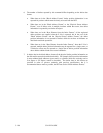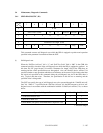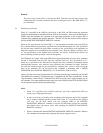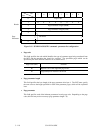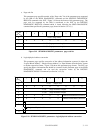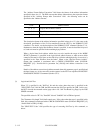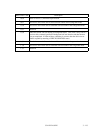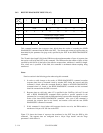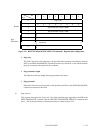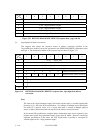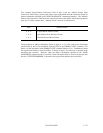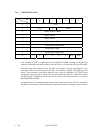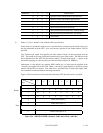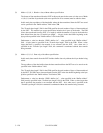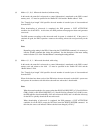
C141-E124-01EN3 - 114
3.4.2 RECEIVE DIAGNOSTIC RESULTS (1C)
Bit
Byte
76543210
0X‘1C’
1 LUN 00000
200000000
3 Transfer Byte Length (MSB)
4 Transfer Byte Length (LSB)
5000000FlagLink
This command transfers data (response data) which show the results of executing the SEND
DIAGNOSTIC command from the IDD to the INIT. The format and content of response data are
determined by the parameter list (page code) specified by the INIT in the SEND DIAGNOSTIC
command.
The “Transfer byte length” field in the CDB shows the maximum number of bytes of response data
that can be received by the INIT by this command. The IDD transfers the number of bytes of data
specified by this field or all the bytes of the effective response data, whichever is smaller in length.
Also, when zero is specified in this field, this command is terminated without anything being
transferred.
Notes:
Exercise caution in the following points when using this command.
1. In order to avoid damage to the results of SEND DIAGNOSTIC command execution
(response data) from a command issued by another INIT during the interval until this
command is issued, either this command should be linked to the SEND DIAGNOSTIC
command when it is issued or the SEND DIAGNOSTIC command and this command
should be executed after the IDD is reserved.
2. Response data are valid only when “0” is specified in the “SelfTest (self test)” bit and
after a SEND DIAGNOSTIC command which specifies a specific operation in the
parameter list is executed, with the IDD transferring response data showing the execution
results of the latest SEND DIAGNOSTIC command. Also, even if this command is
executed, the response data in not cleared, and remains valid until the next SEND
DIAGNOSTIC command is executed.
3. If this command is issued when valid response data do not exist, the IDD transfers a
maximum of 4 bytes of X ‘00’ data to the INIT.
Figure 3.21 shows the format of response data transferred to the INIT from the IDD by this
command. The response data are configured from a 4-byte “Page header” and the “Page
parameters” which follow it.



